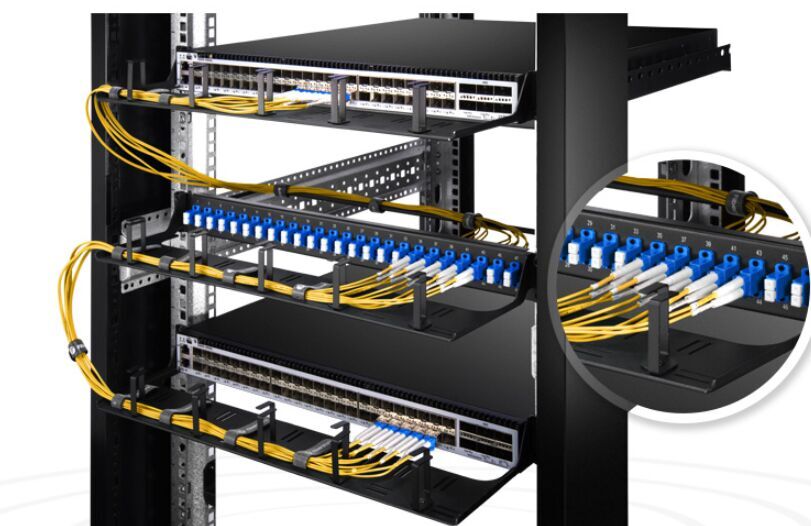What Is a Fiber Optic Patch Panel?
Patch panel is defined as the interface between multiple optical fibers and optical equipment. It’s a termination unit that helps networking and fiber distribution from wiring closet to various terminal equipment. Fiber optic patch panel is a mounted hardware unit containing an assembly of port locations in a communication or other electronic or electrical system. Fiber optic patch panel is used to terminate the fiber optic cable and provide access to the cable’s individual fibers for cross connection. They are mostly mounted in 19 inch relay racks, but they can also be mounted on freestanding rails, in cabinets and also on walls.

Fiber Optic Patch Panel Types
Fiber optic atch panel are divided into two types based on different designs, the wall mount and rack mount category. Both types can house, organize, and protect fiber optic cable and connectors. Rack mount patch panels come in flat and angled versions while the wall mount patch panel is used for direct termination of several fibers, and are mostly equipped with routing guides to limit the bend radius for enhanced strain-relief control.
They can also be classified according to the count of ports. The common patch panels are come in 12 ports, 24 ports, 48 ports and 96 ports. The height of it can also vary as 1U, 2U, 3U and so on. For more about the types, click here.
How to Connect Fiber Optic Cable To Fiber Patch Panel
Insert the adapters into the mounting plate, then fix the mounting plate in position. Prepare cables based on standard termination procedures and ensure there is enough surplus cable to work with. Connect the cable by fixing the gland and roll the excess fiber onto the spool. After that, remove the protection cap and insert into position in the adapter. Once the cables are all attached, it’s better to use a zip tie to secure the cables in a bundle. In a typical setup, the connection consists of a shorter cable plugged into the front side of the patch panel and a longer cable plugged into the back. In this way, the panel can take the place of otherwise expensive switching equipment.
This is the extract from How to Connect Fiber Optic Cable to Fiber Optic Patch Panel . You can find more useful information in it.
How To Use a Fiber Optic Patch Panel
Getting a fiber optic patch panel is mainly for two reasons: termination and better cable management. As for patch panel termination, it is the step to terminate fibers on the patch panel, a precise task required much attention.
As for cable management, here I recommend you to accompany it with cable managers. From a top-down perspective, the order of the devices in a cabinet should be: fiber patch panel 1, cable manager 1, fiber patch panel 2, cable manager 2
For fiber optic cabling cable management, you should plan the location of your fiber connectivity hardware carefully, including fiber patch panels. You can choose between direct cross connection and patch panel. It is also necessary to arrange your routing and dressing of your fiber patch cords if you choose to use fiber panels. In the meantime, you also have a choice to use fiber cable management brackets to avoid the dangling fiber patch cables. Owning a fiber optic path will not only spare you a lot of time and energy in cabling design, but also present you a neat cabling system, which will bring you efficient work.
Related Article: What Can High-density Fiber Patch Panel Achieve?